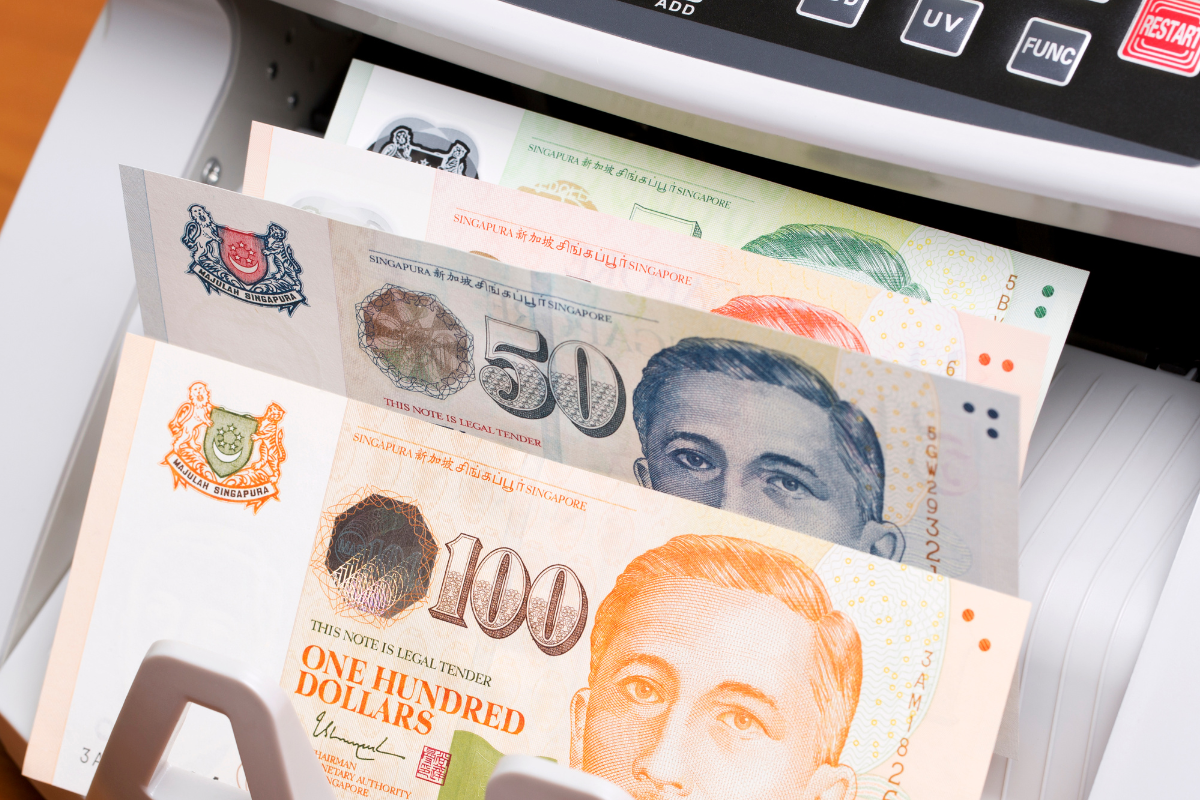12 Types of Channel Reward Programs
12 Types of Channel Reward Programs
A channel reward program is a way for businesses and organizations to incentivize and reward their loyal customers or members. These programs come in various types, each with unique features and benefits.
Some of the most common types of channel reward programs include loyalty programs, referral programs, and affiliate programs.
Each of these programs is designed to encourage customers or members to engage with the business or organization in specific ways, such as making repeat purchases, referring friends and family, or promoting the business.
These business rewards programs are a powerful tool, not only for boosting customer engagement and loyalty but also for driving sales and revenue growth.
What Is A Channel Reward Program?
A channel rewards program is a strategic framework implemented by businesses to encourage and motivate their channel partners (distributors, resellers, etc.) to achieve specific business objectives. T
hese programs leverage a combination of incentives and recognition to drive desired behaviors and outcomes within the channel network.
Why Use Channel Reward Programs For Your Business?

There are several reasons why businesses use channel reward program:
- Boost Retention: Repeat customers are more valuable than new ones. They know your brand and what makes you unique. A high B2B retention rate indicates a strong business. Rewarding loyalty is key to boosting retention.
- Grow Credibility: Your brand’s identity is shaped by your customers. Strong customer connections build credibility and recognition within your industry, whether you interact with end customers directly or through a channel.
- Create Evangelists, Not Mercenaries: Short-term incentives create temporary customers. Focus on building long-term reasons for customers to stay, fostering passionate advocates who genuinely invest in the relationship.
- Empower Channel Marketers: An informed and passionate channel is crucial for channel marketing success. A loyalty program facilitates education, awareness, and enthusiasm, leading to a better customer experience and a competitive edge.
- Gain Customer Insights: Loyalty programs provide valuable data about your channel. This insight helps you refine your products, understand your strengths and weaknesses, and continuously improve your program.
- Boost Sales: Ultimately, all these benefits lead to increased sales. A loyal, passionate, and knowledgeable channel will choose you over competitors, making channel loyalty the backbone of a successful business.
Types Of Channel Rewards Programs

As a business owner, it’s important to find ways to attract and retain customers. One effective way to do this is by implementing a Channel Rewards Program. These programs offer incentives for customers to continue doing business with your company.
Here’s a list of some of the top channel loyalty programs for businesses. These programs can help increase customer loyalty, boost sales, and drive repeat business. So, if you’re looking for ways to take your business to the next level, check out these programs and see how they can benefit your company.
Value-Added Reseller (VAR)
A Value-added reseller (VAR) program is a type of channel reward program where a company partners with resellers who add value to a product or service by providing additional services such as customization, integration, and training. These resellers then sell the product or service to end-customers.
VAR programs are often used by companies that sell technology products such as software, hardware, and services. They allow the company to expand their reach and increase sales without having to invest in their own sales and marketing teams.
To use a VAR program, a company typically needs to have a product or service that is in demand and can be customized or integrated to meet the needs of different customers. They also need to have a process in place to train and support their resellers.
To be successful with a VAR program, companies should communicate clearly with their resellers and provide them with the necessary tools, training, and support to be successful. They should also measure and reward performance, and provide incentives for resellers to reach sales goals.
Influencer Channel
An influencer channel is a type of channel reward program that involves partnering with social media influencers to promote a brand or product. These influencers have a large following on platforms such as Instagram, YouTube, or TikTok, and can help to increase brand awareness and drive sales.
To use an influencer channel, a brand would first identify influencers that align with their target audience and values. They would then reach out to these influencers and negotiate a partnership, which may include sponsored content, product giveaways, or other forms of promotion.
To maximise the effectiveness of an influencer channel, it’s important to select influencers who are genuinely interested in and passionate about the brand or product. This will help to ensure that their content is authentic and resonates with their followers. Additionally, it’s important to set clear goals and metrics for the partnership, and to track the results in order to measure the return on investment.
Overall, an influencer channel can be a powerful tool for driving awareness and sales, but it’s important to approach it with a strategic mindset and to select the right influencers for your brand.
Loyalty Incentives And Partner Retention
Loyalty incentives and partner retention programs are types of channel reward programs that are designed to encourage long-term relationships between a brand and its partners or customers. These programs typically involve offering rewards or incentives to customers or partners who make repeat purchases or continue to do business with the brand over time.
To use loyalty incentives and partner retention programs, a brand would first need to set up a system for tracking customer or partner purchases and engagement. This could be done through a loyalty program app, a customer relationship management system, or a simple point system. Once this system is in place, the brand can then begin to offer rewards or incentives to customers or partners who reach certain milestones or thresholds.
Examples of these rewards and incentives may include discounts, exclusive access to new products, or even free products or services. Additionally, brands can also offer tiered rewards system, where the more a customer or partner engages with the brand, the more rewards they can earn.
To maximise the effectiveness of a loyalty incentives and partner retention program, it’s important to make the program as accessible and easy to use as possible. Additionally, it’s important to tailor rewards and incentives to the interests and preferences of customers or partners to increase their appeal.
Overall, loyalty incentives and partner retention programs can be an effective way to encourage long-term relationships with customers and partners, and can help to increase repeat business and customer loyalty.
Sales Performance Incentive Funds (sPIFS)
Sales performance incentive funds (SPIFs) are a type of channel reward program that are designed to motivate and incentivise sales teams and channel partners to meet or exceed sales goals. These programs typically involve setting sales targets, and then offering a financial or other type of reward to sales teams or channel partners who meet or exceed those targets.
To use SPIFs, a company would first need to set clear and achievable sales targets, and then communicate these targets to the sales team or channel partners.
The company should also set up a system for tracking and measuring sales performance, so that it can accurately determine who is eligible for the rewards. Once this is done, the company can then begin to offer the rewards to those who meet or exceed the targets.
Rewards offered through SPIFs can include cash bonuses, trips, or other incentives. The rewards should be tailored to the motivation of the sales team or channel partners, and should be significant enough to motivate them to reach the targets.
To maximise the effectiveness of SPIFs, it’s important to ensure that the sales targets are realistic and achievable, so that sales teams and channel partners feel motivated to reach them. Additionally, it’s important to communicate the program clearly and regularly, and to provide feedback and recognition to sales teams and channel partners to keep them engaged.
Overall, SPIFs are a powerful tool to incentivise sales teams and channel partners to meet or exceed sales goals. They’re a great way to motivate sales teams and channel partners, and can help to increase sales and revenue for the company.
Rebates Incentives
Rebate incentives are a type of channel reward program that involve offering financial rewards to channel partners or customers for reaching certain sales or purchase milestones. These programs are designed to increase sales and encourage repeat business by offering financial incentives for reaching specific targets.
To use rebate incentives, a company would first need to set clear and achievable sales or purchase targets, and then communicate these targets to the channel partners or customers. The company should also set up a system for tracking and measuring sales or purchase performance, so that it can accurately determine who is eligible for the rebates. Once this is done, the company can then begin to offer the rebates to those who meet or exceed the targets.
Rebates can be offered in the form of cash or credit, and can be used as a percentage of the sale or purchase, or as a fixed amount. The rebates should be significant enough to motivate channel partners or customers to reach the targets, and should be tailored to the motivation of the channel partners or customers.
To maximise the effectiveness of rebate incentives, it’s important to ensure that the sales or purchase targets are realistic and achievable, so that channel partners or customers feel motivated to reach them. Additionally, it’s important to communicate the program clearly and regularly, and to provide feedback and recognition to channel partners or customers to keep them engaged.
Overall, Rebate incentives are a great way to increase sales and encourage repeat business by offering financial incentives for reaching specific targets. They’re a powerful tool to motivate channel partners or customers and can help to increase revenue for the company.
Solution Development Funds
Solution Development Funds (SDF) are a type of channel reward program that companies use to incentivise and support the development of solutions that integrate with their products. These solutions can include software, hardware, or services that complement or enhance the functionality of the company’s products.
To use an SDF, a company typically establishes a program with specific guidelines and criteria for eligible solutions. They may also set a budget for the program, and allocate funds to support the development of solutions that meet the criteria. Companies may also provide resources, such as technical support or training, to help solution developers succeed.
To participate in an SDF, solution developers typically need to submit a proposal outlining their solution and how it meets the program’s criteria. The company will then review the proposal and provide feedback on whether the solution is eligible for funding. Once a solution is approved, the developer will receive the funding and any other resources provided by the program, and will be expected to deliver the solution in a set timeframe.
SDFs can be a great way for companies to support the development of solutions that complement their products, and for solution developers to access funding and resources to help them bring their solutions to market.
Market Development Funds (Mdfs)
Referral incentives
Cooperative funding (CO-OP funding)
Cooperative funding, also known as CO-OP funding, is a type of channel reward program where a company and its partners or resellers jointly fund marketing and advertising campaigns. The goal of CO-OP funding is to increase awareness and demand for the company’s products or services through coordinated marketing efforts.
To use CO-OP funding, a company will typically establish a program with specific guidelines and criteria for eligible marketing and advertising activities. They will also set a budget for the program, and allocate funds to support the marketing and advertising activities of authorised partners or resellers that meet the criteria. The company and the partners or resellers will then jointly fund the campaigns.
To participate in CO-OP funding, partners or resellers typically need to submit a proposal outlining their marketing and advertising activities and how they align with the program’s criteria. The company will then review the proposal and provide feedback on whether the activities are eligible for funding. Once an activity is approved, the partner or reseller will receive a portion of the funding and will be expected to execute the activity within a set timeframe.
CO-OP funding can be a great way for companies to increase their marketing and advertising reach while also providing partners or resellers with an opportunity to promote their own business and increase their sales. It also enables companies to share the costs of marketing campaigns with their partners or resellers, making it a cost-effective way to drive business growth.
Enablement And Training Incentives
Enablement and training incentives are a type of channel reward program that companies use to encourage and support the training and development of their partners or resellers. The goal of these incentives is to ensure that partners or resellers have the knowledge and skills they need to effectively sell and support the company’s products or services.
To use enablement and training incentives, a company will typically establish a program with specific guidelines and criteria for eligible training and development activities. They may also set a budget for the program, and allocate funds to support the training and development of authorised partners or resellers that meet the criteria. The company may also provide resources such as training materials, certifications, and access to training programs.
To participate in enablement and training incentives, partners or resellers typically need to complete the training and development activities and pass any associated tests or certifications. The company will then review the partner or reseller’s progress and provide the incentives if the partner or reseller met the program’s criteria.
Enablement and training incentives can be a great way for companies to ensure that their partners or resellers have the knowledge and skills they need to effectively sell and support their products or services. It also can help companies to increase their sales and revenue by having well-trained partners or resellers who can promote and sell their products or services effectively.
Deal Registration Incentives
Deal registration incentives are a type of channel reward program that companies use to incentivise and support the sales efforts of their partners or resellers. The goal of these incentives is to encourage partners or resellers to register deals with the company and to provide them with exclusive rights to sell the company’s products or services to specific customers.
To use deal registration incentives, a company will typically establish a program with specific guidelines and criteria for eligible deals. They may also set a budget for the program, and allocate funds to support the incentives for registered deals. The company may also provide resources such as marketing materials or access to technical support to help partners or resellers close deals.
To participate in deal registration incentives, partners or resellers typically need to register a deal with the company and provide information about the potential customer, the products or services being considered, and the expected closing date. The company will then review the deal and, if it meets the program’s criteria, will provide the registration incentive to the partner or reseller and may also provide additional resources or support to help close the deal.
Deal registration incentives can be a great way for companies to increase sales and revenue by providing partners or resellers with an incentive to register and close deals. It also can help companies to identify and focus on the most promising sales opportunities and to ensure that their products or services are being sold by partners or resellers who are committed to their success.
Staffing Or Embedded Headcount
Staffing or embedded headcount is a type of channel reward program that companies use to incentivise partners or resellers to invest in dedicated resources to support the company’s products or services. The goal of this program is to provide partners or resellers with dedicated resources, such as engineers, technicians, or salespeople, to help them sell and support the company’s products or services more effectively.
To use staffing or embedded headcount, a company will typically establish a program with specific guidelines and criteria for eligible partners or resellers. They may also set a budget for the program and allocate funds to support the cost of the dedicated resources. The company may also provide resources such as training or technical support to help the dedicated resources perform their duties effectively.
To participate in staffing or embedded headcount, partners or resellers typically need to commit to hiring and maintaining a certain number of dedicated resources and to provide information about the resources they will be hiring, their qualifications, and their roles. The company will then review the partner or reseller’s proposal and, if it meets the program’s criteria, will provide the staffing or embedded headcount incentives to the partner or reseller.
Staffing or embedded headcount can be a great way for companies to ensure that their products or services are being sold and supported by partners or resellers who have dedicated resources committed to their success. It also can help companies to increase their sales and revenue by having dedicated resources who can sell and support their products or services effectively.
Key Takeaway
Companies utilize various channel reward programs to motivate and empower their partners or resellers. These include Solution Development Funds (SDFs), Market Development Funds (MDFs), Referral Incentives, Cooperative Funding (CO-OP), Enablement and Training Incentives, Deal Registration Incentives, and Staffing or Embedded Headcount.
Each program comes with specific guidelines, criteria, and a dedicated budget. The key is that these programs enable companies to boost business growth, drive sales and revenue, and ensure their products or services are promoted by committed partners or resellers.
By offering incentives and resources like funding, training, marketing materials, and dedicated personnel, companies can effectively support their partners or resellers and achieve their business objectives.
Discover also Partner Relationship Management Solutions in Singapore can transform your channel strategy and unlock new opportunities.










